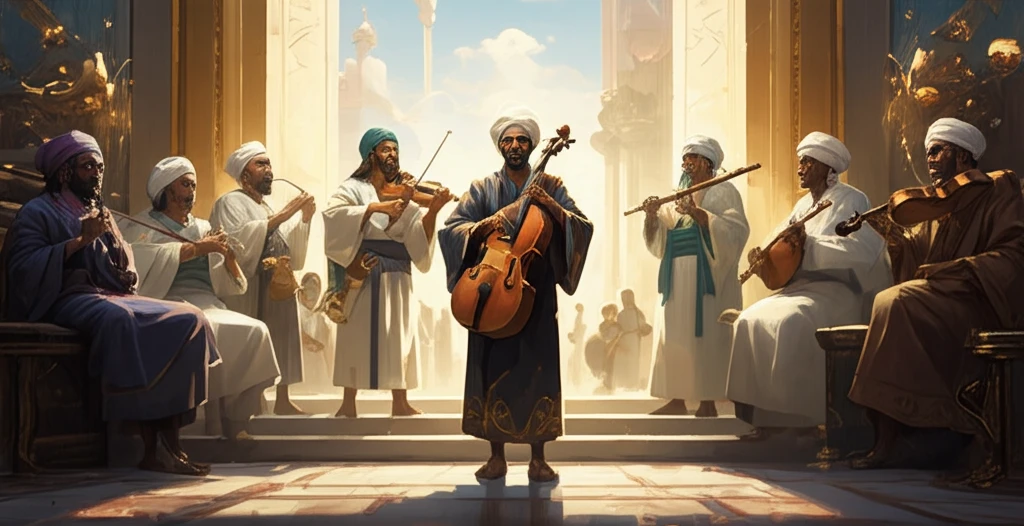
Unveiling Ancient Echoes: Did Foreign Singers Shape Jerusalem's Temple Music?
"A Deep Dive into Psalm 92 and Its Surprising Secrets"
For centuries, the walls of Jerusalem's temple resonated with sacred music, a symphony of voices and instruments lifting hearts in worship. While the image often conjures native Israelite musicians, a provocative theory suggests that foreign singers played a significant role in shaping this soundscape. Could these musical outsiders have left their mark on one of the most revered sites in ancient Judaism?
This intriguing proposition stems from a close reading of Psalm 92, a text traditionally associated with Sabbath liturgy. However, scholar Nissim Amzallag proposes a radical reinterpretation. He argues that beneath the psalm's surface lies evidence of foreign Yahwistic singers integrating into the Jerusalem temple clergy. This integration, Amzallag contends, sparked friction and resistance from their Israelite counterparts.
Imagine the cultural dynamics at play: musicians from different backgrounds, each carrying unique traditions and perspectives, converging in a shared sacred space. What harmonies – and what dissonances – might have emerged? This article delves into Amzallag's analysis, exploring the hidden clues within Psalm 92 and the broader historical context to shed light on this fascinating possibility.
Psalm 92: More Than Just a Sabbath Song?

Psalm 92 is typically viewed as a hymn, a royal ode, or a wisdom composition crafted for the Sabbath service. Its themes of divine justice and the contrast between the righteous and the wicked seem straightforward. Yet, Amzallag challenges this conventional understanding, suggesting that the psalm's very structure and language hint at a deeper, more complex narrative.
- The Puzzle of Praise and Condemnation: Why does Psalm 92 interweave verses of adoration with sharp rebukes of the wicked?
- The Enigmatic Sabbath Connection: What is the significance of the psalm's association with the Sabbath, and why is it the only psalm with this specification?
- A Hidden Dimension: Verse 7 states: 'The brutish man cannot know; The stupid cannot understand this.' Is the psalmist hinting at a concealed meaning accessible only to a select few?
Rewriting History: Why This Matters
Amzallag's research, while focused on a single psalm, opens a window into the vibrant and complex cultural landscape of ancient Jerusalem. It compels us to reconsider the traditional narrative of a homogenous Israelite musical tradition and acknowledge the potential influence of foreign musicians. By recognizing the Ezrahites and their struggles, we gain a richer, more nuanced understanding of the forces that shaped the music and worship of the Jerusalem temple—and perhaps, a deeper appreciation for the power of music to bridge cultures and challenge established norms.
